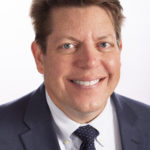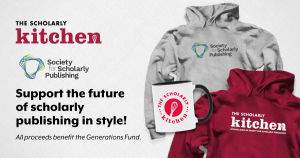Executive Director, Department of Marketing, Communication & Public Relations, Peralta Community College District

Please tell us a bit about yourself (e.g. hometown, current locale, course of study).
I grew up in Kansas, in a suburb of Kansas City called Roeland Park – my friends and I called it the land of Big Dogs and Small Fences. I got my bachelor’s degree from Kansas University and a master’s degree from the University of Texas at Austin, both in radio-TV-film. It was at UT Austin where I had my first encounter with scholarly publishing. I served as a volunteer associate editor for The Velvet Light Trap, a journal published by UT Press and edited by grad students at UT and University of Wisconsin Madison. That was back when peer review was done by mail – paper manuscripts sent back and forth via the US Postal Service. To give you an idea of the time period, my media-obsessed classmates and co-editors on TVLT would get together, work on the journal, and then watch these cool new TV shows called The Simpsons and Twin Peaks.
Describe some of your current responsibilities, and what type of organization you belong to.
I work at the Peralta Community College District in Oakland, California. My title is Executive Director of Marketing, Communication and Public Relations. I’m part of the Chancellor’s cabinet (executive team), and functionally I’m the public information officer (PIO) and spokesperson for the District. I lead the Department of Marketing, Communication & Public Relations which is a group of 10 talented marketers and broadcast media professionals. I oversee the District’s cable access TV station, a community low power FM radio station, and the District website (which we’re in the process of updating). My team and I help support the Chancellor and the four colleges in the district with marketing services including social media, a newsletter, and advertising campaigns.
After more than twenty years working in scholarly publishing for publishers including Cell Press and Public Library of Science (PLOS) and publishing vendors like HighWire and Reprints Desk, I moved from academic publishing to academia itself. In academic publishing, I helped scholars get their research read. Now, I’ve just moved “upstream.” I’m helping an incredibly diverse population of urban residents become scholars so they can enrich themselves with knowledge and improve their lives with greater earning power, and perhaps even get their own doctorates and research publications. And as a PIO, my professional world still converges with scholarly publishing.
Earlier this year, the Peralta Genomics Institute, a laboratory operating within the District that provides student learning opportunities while doing complex genomics data analysis, contributed to a research article in Communications Biology, an Open Access journal published by Springer Nature. Dr. Bob Macey (Director of the Peralta Genomics Institute) and colleagues – including several Peralta community college students – found a Tuatara in New Zealand that had two co-existing mitochondrial genomes in the same individual. It is mind-blowing to find two distinct genomes in a vertebrate. A press release Dr. Macey and I put out helped the article generate media coverage from Science News, the Nature Evolution & Ecology community, a Harvard blog, and The Smithsonian. Dr. Macey and the students from the Peralta Genomics Institute were also co-authors on a Nature article about the Tuatara genome published in August 2020. It’s rare for community college students to be published in research journals so we’re very proud of the Peralta students involved with these publications.
What was your first scholarly publishing role? How did you get that job? What path led to your current position?
My first paying scholarly publishing job was at Cell Press Inc (pre-Elsevier). At that time, the company had 25 employees and published 3 journals. I was hired as the Circulation Manager. I came from the newspaper publishing world so It seemed so relaxing to only produce 26 subscriber distribution lists a year instead of daily lists. Of course, there was this thing called The Internet that was about to turn pastoral, leisurely scientific publishing into the 24/7/365 high-stress phenomenon that we all now know and love!
At Cell Press, my team and I demonstrated the value of product development and branding. We helped Cell authors get their research read by as many people as possible. That included selling subscriptions, optimizing renewal rates, transitioning subscriptions from print to online, and expanding the product line by launching new journals including Molecular Cell, Developmental Cell, Cancer Cell, and Cell Metabolism.
From Cell I went to HighWire where I helped publishers up with technology. It was wonderful to work with so many different publishers and pickup and share best practices across the industry. And at PLOS we kept a laser focus on author (customer) satisfaction. My last job before moving into academia at Peralta was doing content marketing for Research Solutions (aka Reprints Desk). All these jobs have made me a better manager and a better marketer, and I’m putting those skills together in my current role.
If there was a pivotal moment or key person in your career development, please describe briefly.
Certainly, one pivotal moment for me was the decision to shift from being a publishing marketer to being a publishing vendor, which involved a cross-country move. I loved being the Director of Marketing at Cell Press. I had been there for 9 years – I met my wife there! – and it will always be special to me. But my wife and I were ready to leave Boston for a warmer climate. When I was offered a job at Stanford University’s HighWire Press, I jumped at the chance to move to the San Francisco Bay Area and be a part of John Sack’s organization. So after 10+ years working as a marketer, I became a technology project manager. Five years later I became the head of the account management team at HighWire. I did that for four years before moving back into a publisher marketing role.
Interestingly, I feel like I’m a better marketer now precisely because I was so technology and customer-focused during my nine years at HighWire. I got to learn so much from working with other publishers (and satisfying their online marketing needs). And of course, living here in the Bay Area is wonderful – I get to ride my bicycle outdoors all year long, which I certainly could not do comfortably in Boston!
What tools, websites, and organizations do you find most valuable for your career development?
The Society for Scholarly Publishing has been tremendously beneficial for me. The programming at the SSP Annual Meeting is always hugely educational. I benefited by attending SSP meetings as a marketer and as a technology platform provider. And of course, the networking experiences often lead to friendships as well as employment opportunities. If you haven’t joined SSP, why not join today?
What are some of the surprises/obstacles that you’ve encountered during your career?
My early career was in subscription marketing. I had been a marketer for newspapers and cable TV subscriptions before landing in scholarly publishing. When Open Access first became a thing in the early 2000s, I was adamantly against it. I didn’t see how it could be financially sustainable. When PLOS ONE helped Public Library of Science become self-sustaining, my HighWire colleagues and I certainly noticed. I went all in and plunged into Open Access advocacy while working for PLOS.
Now that I’m working at an urban community college district, which doesn’t have a big library budget at all, I’m particularly grateful for Open Access and other Open Educational Resources. The students and faculty in my district couldn’t provide the highest quality education they do now without these open resources. I’m excited about some of the new models for institutional support of OA publishing like the various “subscribe to Open” options. Remember that it is NOT just the big universities that need access to research – there are hundreds of community colleges and millions of young students across the USA and around the world who benefit by having free and open access to research.
What advice would you give to people interested in a career in scholarly communications?
Go for it! Thirty years ago, most people came to scholarly publishing in roundabout ways. I’m excited to see new educational programs springing up with specific certifications in academic publishing. I think it’s also an industry that is broad enough that people can explore different areas, whether that’s editorial, peer review, marketing, technology, or something even more niche like metadata. I’m living proof that scholarly publishing can create opportunities within scholarly publishing as well as in other adjacent sectors like technology and academia.
Learn more about Mark by visiting him online at ZebraChair Media or at PeraltaGEMS.

